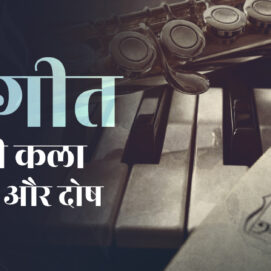Top searched
Saved words
khisyaanii billii khambaa noche
an embarrassed or ashamed person tends to vent his/her feeling by quarrelling
be-niyaaz
without want, free from want, wanting nothing, not in need, able to dispense, independent, carefree
Linguistic Journey from Mirza.ii to Jawahar Cut / Nehru Jacket

Over time, not only have fashion trends changed, but the words used for different garments have also undergone fascinating transformations. Behind each name lies a story — woven from threads of culture, history, and language.
Garments and fashion form a vast subject. So here, let us take just one example — the journey of waistcoat- and jacket-like garments in the Indian subcontinent, especially through their Urdu names. The word waistcoat itself has been Urduized as vasket (واسکٹ).
Mirza.ii – A Quilted Heritage
Mirza.ii was a type of padded, quilted waistcoat worn in colder months. It derived its name from Mirza — a Persian title used for aristocracy and nobility. The title Mirza was associated with Mughal royal lineage. Mirza Fath-ul-Mulk Bahadur, also known as Mirza Fakhru, was the last Crown Prince of the Mughal Empire.
The Mirza.ii wasn’t embroidered — it was quilted for warmth, serving both function and form. While common people might wear simpler garments like the Saddari or Shaluukaa .Mirza.ii spoke of courtly grace and aristocratic refinement.
Miraz.ii Shaluukaa was its original name, which gradually evolved into the shorter form Mirza.ii and long quilted coat is called farGul.
Sadrii – A Vest for the Common Man
The Sadrii is a sleeveless vest still worn today. It came from the Persian word sadr, meaning "chest" or "front." Interestingly, sadr also carries meanings like "foremost," "head," or "uppermost part" — hence its use in titles like Sadr-e-Riyasat (President), and in architecture as Sadr Darwaza (main/front gate). Main market of a city is called sadr-baazaar
In clothing, the Sadrii covered the upper torso. It is also called banDii (بنڈی) — a simple, everyday garment used by the masses, in contrast to the aristocratic Mirza.ii.
Shaluukaa and Niim-aastiin
Shaluukaa is a Persian-origin word referring to a type of small waistcoat or half-sleeved jacket with pockets. It was also called niim-aastiin (نیم آستین). The word aastiin means "sleeve" in Persian, and niim means "half" — describing a garment with half sleeves.
Both these garments were used as innerwear by men and women. The men’s shaluukaa used to have many pockets for keeping money safely. This word is used in many North Indian regional languages, with slightly different pronunciations, such as saluukaa.
With reference to women, this word refers to the choli or blouse. Parveen Shakir, in her evocative poem about a woman adorning herself for her beloved—“Gori Karat Singhar”—beautifully writes:
Kasaa hua kesri shaluukaa
Chunri dhaari daar
Haathon ki ik ik choori mein
Mohan ki jhankaar
A tightly fitted saffron blouse,
A scarf with bold, flowing stripes,
And in every single bangle on her wrist,
Echoes the chime of her beloved, Mohan
Jawahar Cut to Nehru Jacket
The Nehru Jacket, a modern evolution, was popularized by India’s first Prime Minister, Jawaharlal Nehru. Tailored and minimalist, it retained the front-buttoned style and high collar of the traditional achkan or sherwani (long coat-like garments for men), while adapting them for modern political symbolism and elegance.
Interestingly, in fashion circles during the 1960s, it was called the “Jawahar Cut” in tailoring parlance before being globally dubbed the Nehru Jacket.
These garments are more than just clothing — they carry with them the linguistic fingerprints of their era and culture
Delete 44 saved words?
Do you really want to delete these records? This process cannot be undone





